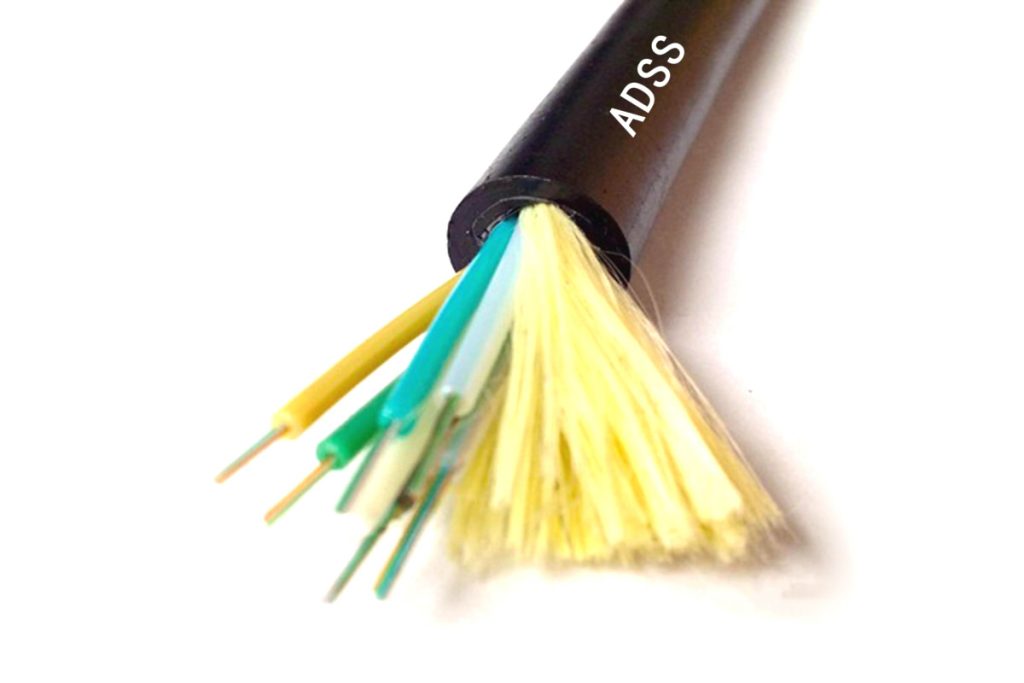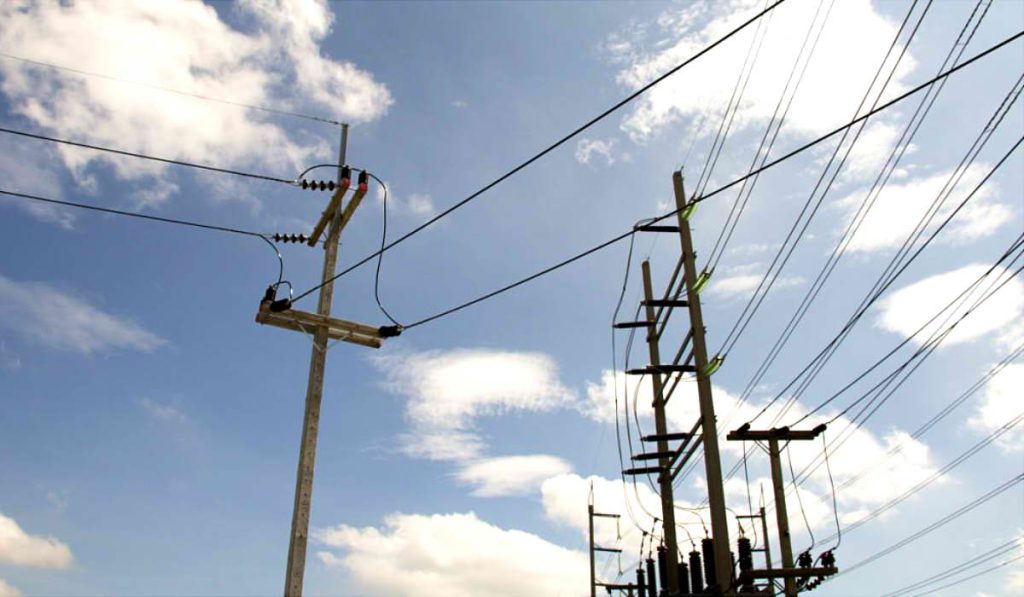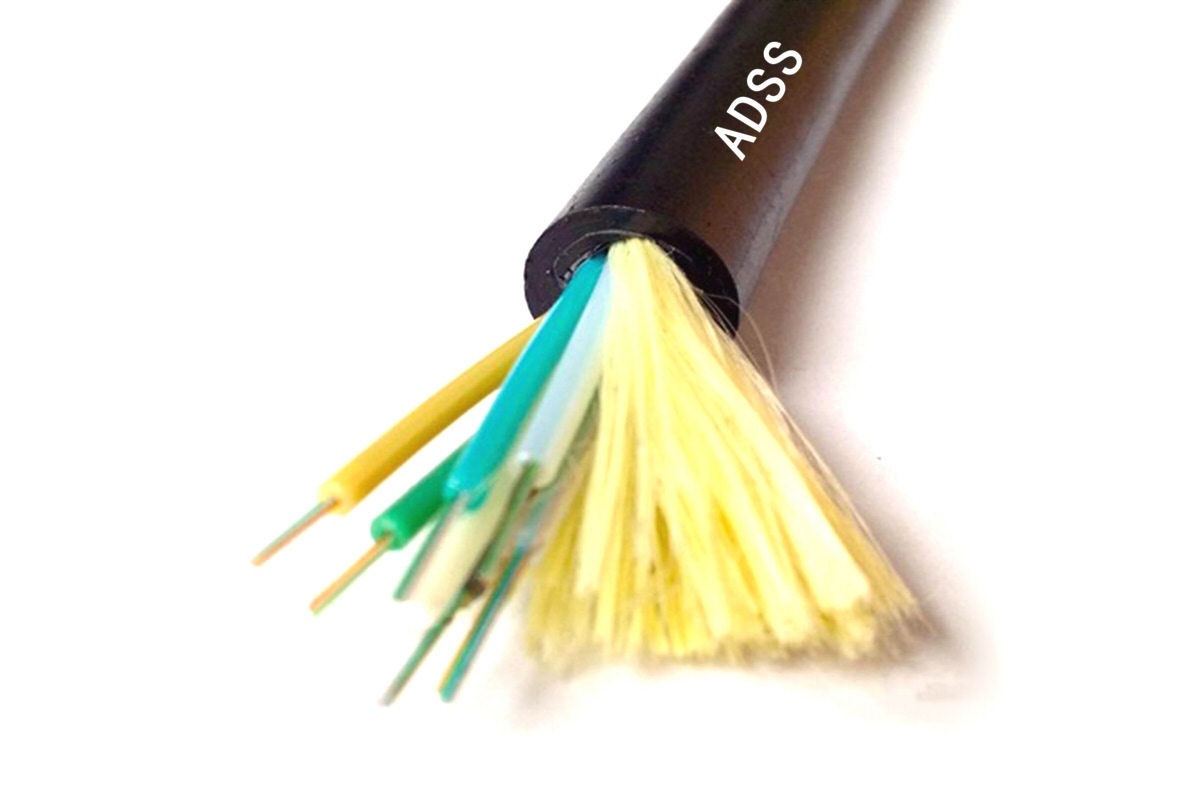El ADSS (All-Dielectric Self-Supporting) It is a type of fiber optic cable used in telecommunications networks, especially in aerial installations. This cable has become a popular choice due to its ability to support its own weight without the need for additional metal supports.. To ensure optimal performance and network durability, It is essential to understand the key parameters of ADSS fiber optic cable.

Table of Contents
- ADSS Fiber Optic Cable Operating Voltage
- Nominal Tensile Strength of ADSS Fiber Optic Cable
- Maximum Allowable Voltage of ADSS Fiber Optic Cable
- Average Annual Stress of ADSS Fiber Optic Cable
- How to Choose the Right ADSS Cables
- Conclusion
ADSS Fiber Optic Cable Operating Voltage
Operating voltage, also known as special use voltage, It is the maximum tension to which the cable is subjected. ADSS optical fiber when it may exceed the design load during its effective useful life. Fiber optic cables can tolerate overloads for short periods, and the fiber can withstand a tension that is generally greater than 60% of its breaking limit. When the tension in the fiber is less than 0.5% (for central tubes) y al 0.35% (for stratified tubes), additional fiber attenuation may occur, but the fiber should return to normal once this tension is removed.
Proper operating voltage ensures reliable operation of ADSS cables over their lifetime. In general, The section of the fiber optic cable has a length of 50 a 100 metros. This is also related to the number of cores and weight of the fiber optic cable.; the heavier it is, the shorter the length of the section. Locking distance is not directly related to pulling force, and a blocking distance of 100 meters can also be achieved with 3KN, It is simply not necessary and is more suitable for stretches of 600 metros. In general, The length of an ADSS fiber optic cable with a tension of 24KN is approximately 300 a 400 metros.
Nominal Tensile Strength of ADSS Fiber Optic Cable
The nominal tensile strength of fiber optic cable, also known as ultimate tensile strength or breaking strength, is the calculated value of the resistance of the bearing section (mainly spun) of the cable. Any fracture discrimination in fiber optic cables must be less than 95%. This parameter is not optional, since many control variables depend on it, like the resistance of the tower, Tensile connections and seismic measurements, among other.
In the cable manufacturing ADSS, even if a lot of yarn is used, the relationship between the nominal tensile strength (RTS) and the measured tensile strength (MAT) (equivalent to the safety factor K for airlines) not appropriate if the available fiber deformation range is small. Generally, MAT is approximately equal to 40% of RTS.
Maximum Allowable Voltage of ADSS Fiber Optic Cable
The maximum allowable tension of the ADSS is theoretically calculated using the weather conditions designed for the tension to which the fiber optic cable is subjected during full load. When voltage is applied, fiber deformation should be ≤ 0.05% (for laminated strand cables) y ≤ 0.1% (for cables with central tube) without additional attenuation.
Usually, This means that the residual length of the fiber is at the limit of this control value. In this case, based on the parameters, weather conditions and arc droop control curve, the permitted distance of use of the fiber optic cable can be calculated.
Therefore, The calculation of MAT is an important basis for the calculation of the stress section of the arc drop of the aerial fiber optic cables, as well as for the characterization of the stress and deformation properties of ADSS cables.

Average Annual Stress of ADSS Fiber Optic Cable
The annual average stress of the fiber optic cable is the tension that the cable is subjected to during the theoretical calculation of the no-wind load, without ice and with the average annual temperature. This can be considered as the average stress of the ADSS in long-term operation. In general, The average annual stress is (16 al 25)% nominal tensile strength. Under this tension, the fiber should not experience additional deformation or attenuation, which guarantees a very stable operation.
The average annual stress is also an important parameter for fatigue and aging of the fiber optic lines. Based on this value, decisions are made on the vibration protection design of the fiber optic cable.
How to Choose the Right ADSS Cables
Choosing the right ADSS fiber optic cables is essential to ensure optimal performance in your telecommunications network.. Here are some key steps to consider when selecting ADSS cables:
Determine Your Loading Requirements
Before selecting an ADSS cable, It is important to understand the specific charging needs of your network. This includes the length of the section, the number of cores required, anticipated maximum load and local weather conditions. The more cores you need and the higher the load, you may need to opt for an ADSS fiber optic cable with a higher nominal tensile strength.

Consider Weather Conditions
Weather conditions in your deployment area are crucial. If your region experiences strong winds, ice or extreme temperature changes, You will need to select an ADSS cable designed to withstand those specific conditions. The maximum allowable tension must be sufficient to withstand the stresses caused by these climatic factors..
Evaluate Durability and Lifespan
Cable durability and lifespan are essential to ensure a long-term investment. Check the specifications of the fiber optic manufacturer to ensure ADSS fiber optic cable is designed for long life and meets your durability expectations.
Consult a Professional
If you are not sure which ADSS cable is best suited for your needs, consult a telecommunications professional or specialized engineer. They can offer expert guidance based on the specific conditions of your project..
Conclusion
Choosing the right ADSS fiber optic cables is essential to ensure a reliable and high-performance telecom network. The key parameters, as operating voltage, nominal tensile strength, the maximum allowable stress and the annual average stress, must be understood and carefully considered when selecting the appropriate cable. Besides, It is important to take into account local weather conditions and the specific charging needs of your network. By following these steps and seeking professional guidance when necessary, you can ensure your ADSS cables meet your project requirements and work reliably for many years.

